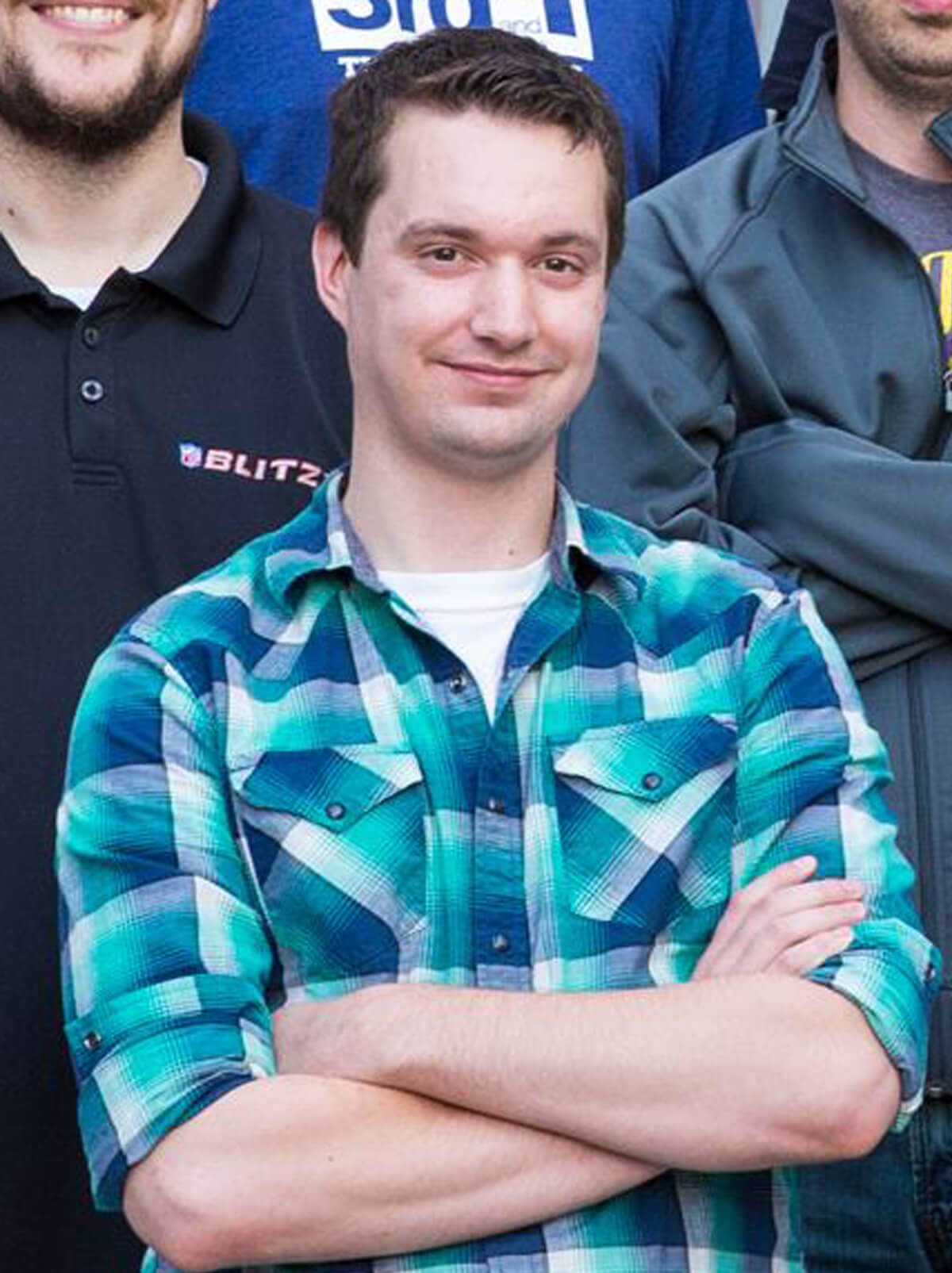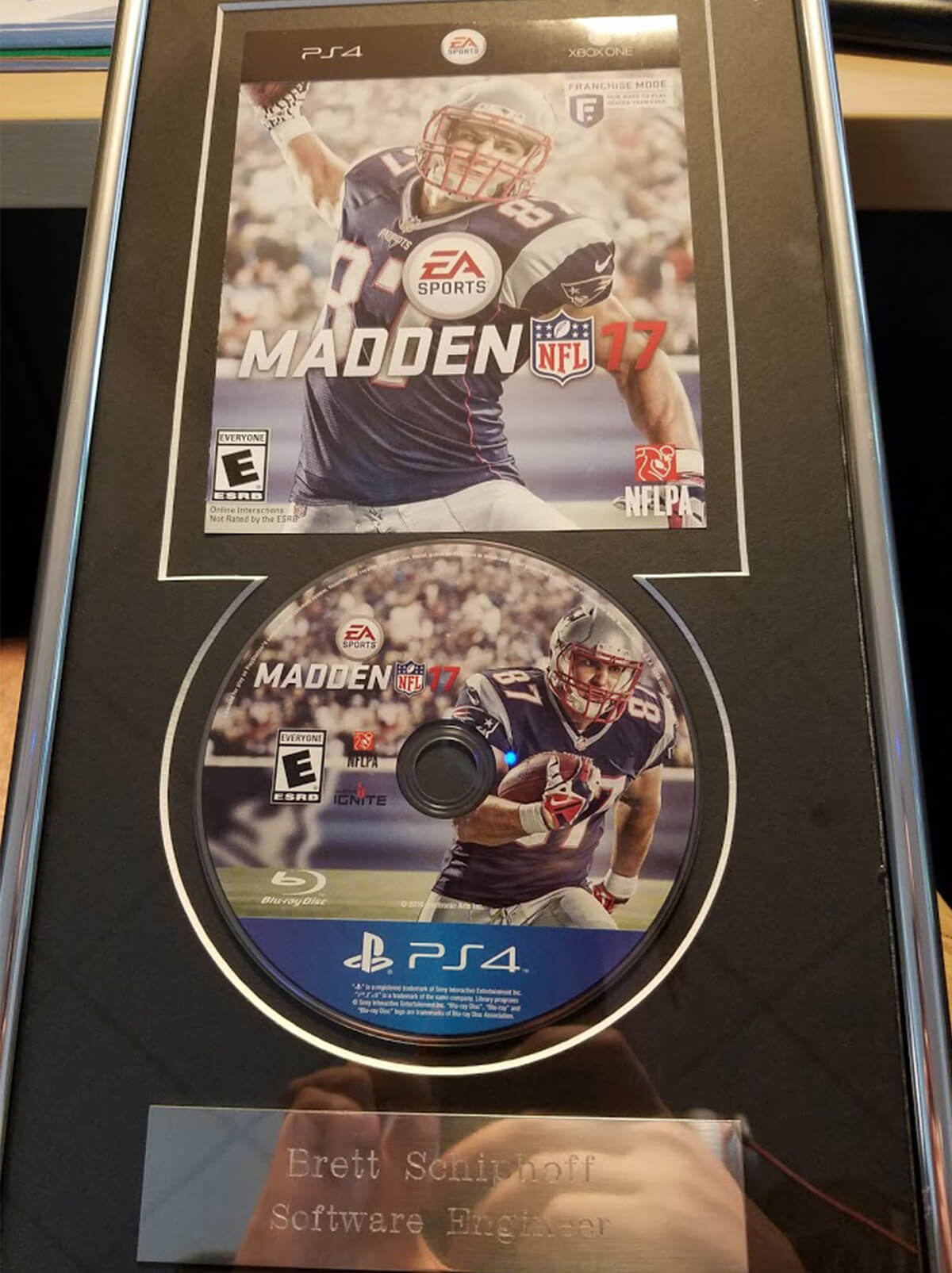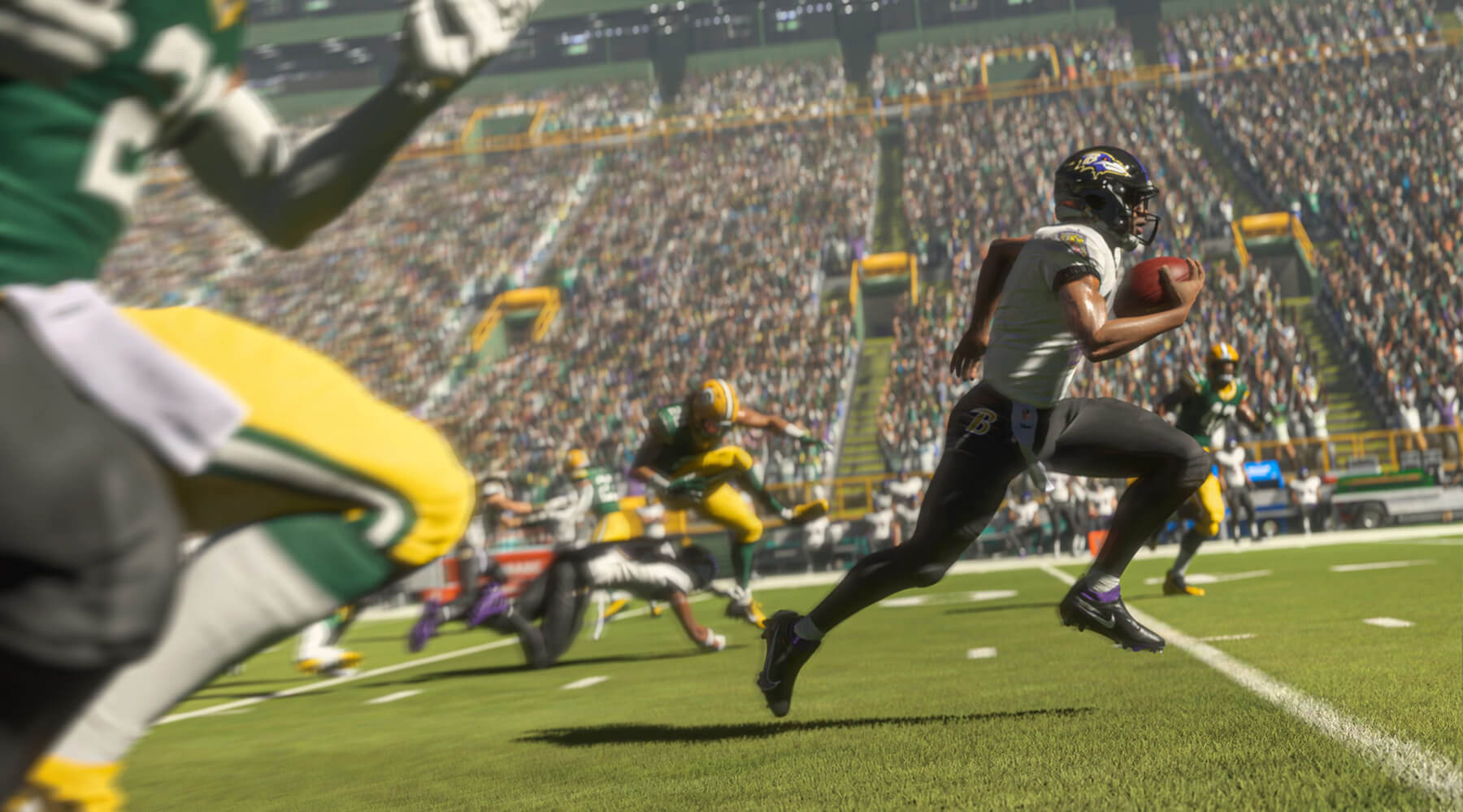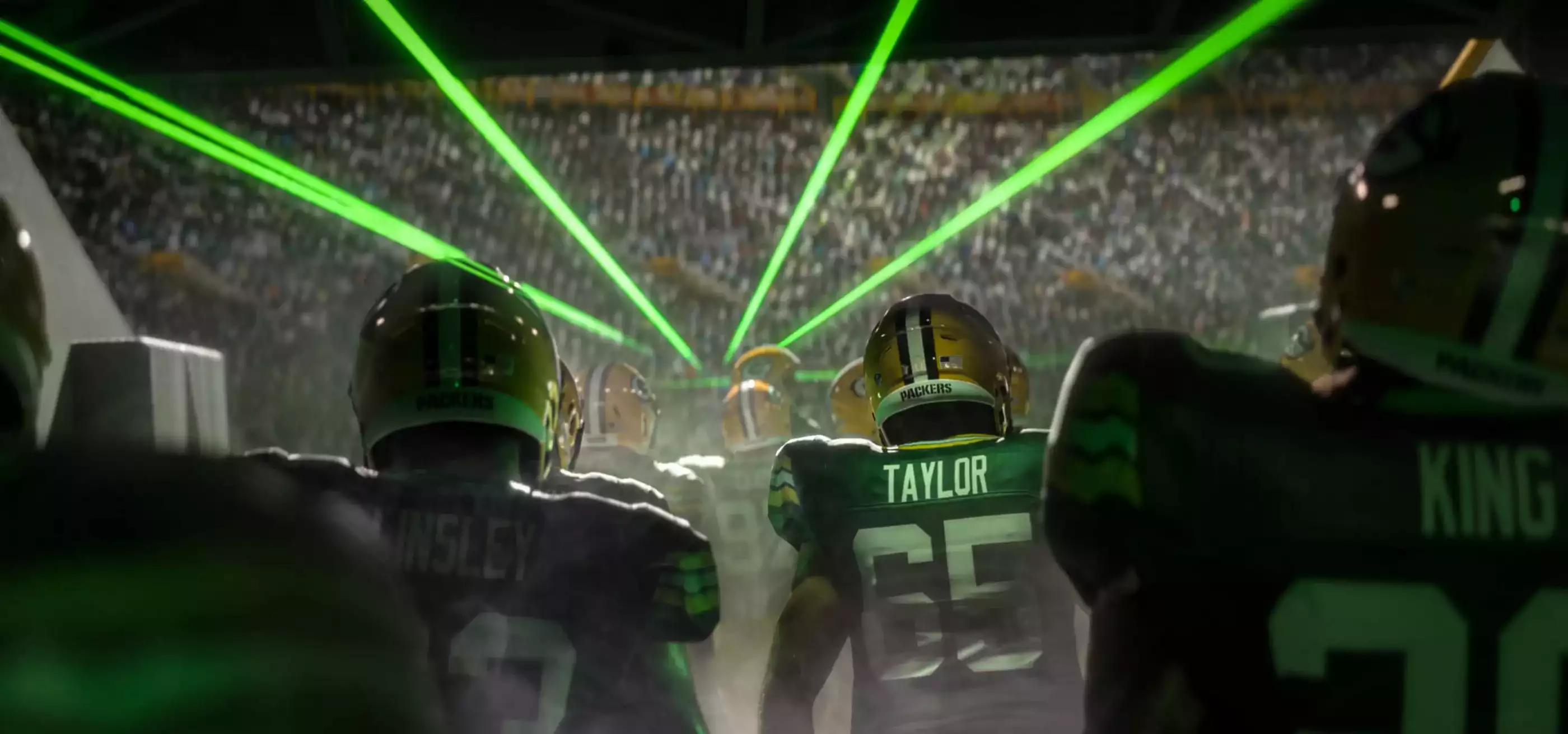When Brett Schiphoff came to DigiPen for the BS in Computer Science in Real-Time Interactive Simulation program, he quickly learned something new about himself.
“I didn’t fully grasp just how much of a sports fan I was,” Schiphoff says.
Growing up in a small town in Iowa, sports had been a constant backdrop and conversation starter. “When I arrived at DigiPen, that icebreaker was no longer as reliable as it once was!” Schiphoff says, recalling the many times he was met with desperate attempts to change the subject to video games, or simply the phrase, “sportsball.” Schiphoff did find his people eventually, doing so in the most DigiPen way possible. “To my surprise, a couple of people in The Pokémon Club were football fans,” he says. “We ended up forming the DigiPen Pokémon League (DPL), where everyone would draft Pokémon to construct their teams. We made a scoring system based on football, and I even wrote power rankings for each DPL team.”

Even though Schiphoff’s passion for football and video games were seemingly opposed at first, they ended up harmoniously conspiring to help him ace his first big job interview with game industry titan Electronic Arts during his senior year at DigiPen in 2012. “One of my artificial intelligence classes had us come up with a way to utilize state machines, so I made a simple 11-on-11 football game, with the focus on the quarterback throwing the ball or running with it,” Schiphoff says. “When I flew into Orlando for my in-person interview at EA, the AI techniques that my classes showed me, and my knowledge of how players should behave on the field, are the things that landed me my dream job.” Schiphoff was immediately hired as a Core Football Gameplay Engineer on the Madden and NCAA Football series, where he’s spent the last eight years turning America’s most popular sport into code.
It’s a role he’s relished, where his football knowledge and his programming prowess are valued in equal measure. “My job, in my opinion, is the most fun job on the team,” Schiphoff says. “I get to change the AI of players on the field, make new mechanics for the user to play with, and make the game feel like an actual game of football. There are many times when I’m watching a game on Sunday and think, ‘Oh, that was cool! How would I do that in Madden?’”

In fact, taking cues from actual football games is exactly how Schiphoff solves most in-game issues. One year, Madden quality assurance testers noticed that the player’s receivers could almost always outrun defenders by heading in a straight line downfield. Schiphoff and his team were tasked with making this tactic less effective. “One of our designers noted that in real life, a defender would turn their body back towards the quarterback, and drift his momentum towards the sideline, walling off the receiver and giving them a more difficult angle to catch the ball,” Schiphoff says. “We fixed the bug by implementing exactly that real-life technique.”
The notes Schiphoff takes from the NFL are even more direct sometimes, a big surprise when he first started working at EA. “I was shocked when I saw Cam Newton, one of the quarterbacks in the NFL, come into our studio one day,” Schiphoff says. “I was still too new to realize that actual players and coaches come to the studio, let alone talk about film in the same manner you would expect them to during their own practices.”
Since then, Schiphoff has sat in on a number of meetings with NFL coaches and players, discussing how plays should be run, how players think, and how that might fit into Madden. “An engineer like me approaches those meetings trying to think of the tech that already exists in this space, and the tech needed to get the results that are desired,” Schiphoff says. “For instance, a few years ago, run-pass options started to become more commonplace in the NFL. An engineer would want to consider if there are changes to our current run handoff system that would be needed, if our pass icons would be able to show up on run plays, and how the AI on defense would react when it’s not clear if it’s a run play or a pass play.”

While Madden fans demand a certain level of hyperrealism in the series — a challenge Schipoff and his team are always working to meet — realism isn’t always the best approach. As Schiphoff notes, some things that happen in real football don’t feel quite as good when you experience them in a video game. “When you’re watching football on TV and a receiver drops a pass thrown right into his hands, it’s a frustrating moment, but it happens,” Schiphoff says. “When you are controlling that receiver and you drop that same ball, it can be seen as a bug! It’s actually funny to watch ‘bugs’ happening in the games you watch on Sunday.”
Today, surrounded by like-minded, game developing sports fans, Schiphoff couldn’t imagine a better career. “Some days, the work I’m tasked on sounds more like fun than anything,” Schiphoff says. “I’ve been on the gameplay team for over eight years now, and I’m looked to as the subject matter expert on a variety of our main gameplay pillars. To see how far I’ve come, and then seeing how much more there still is to learn, it’s hard not to get excited.”
Even eight years out of school, lots of that aforementioned learning still comes courtesy of his DigiPen days. “I often find myself grabbing my old notes from class or old textbooks, because DigiPen really was preparing me with the right material,” Schiphoff says. “DigiPen was hard for me, and there were days where it was difficult to understand why I needed to take a certain class or do a certain project. While it can be difficult to see the forest for the trees, just know that what you learn there will inevitably find use in your career in this industry.”
